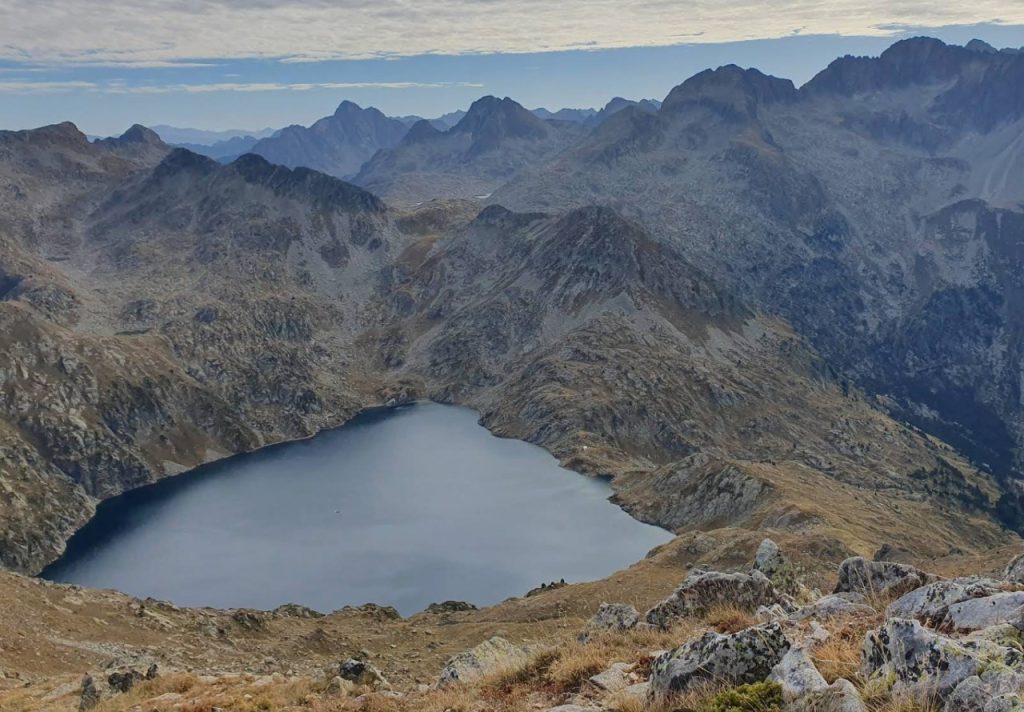
A crystalline basin nestles in the rocky, snow-capped peaks of the Spanish Pyrenees some seven thousand feet above sea level–the picture of pristine wilderness. For forty years, Spanish ecologist Jordi Catalan has made regular treks on foot and by ski to visit Lake Redon. Not for the scenery, but for what lies underneath, hidden in the lakebed sediments: centuries worth of genetic material from ancient aquatic organisms.
Following these biological breadcrumbs, Catalan and his colleagues used fish parasite DNA to reveal that humans introduced fish to mountain environments centuries before previously believed, the international team of researchers reported in the April 8th issue of Nature Communications. The extreme terrain kept fish out of most alpine lakes until the Late Roman and Visigothic periods, when hungry shepherds likely introduced them for sustenance fishing.
Written records document lake stocking as early as the 14th century. However, Catalan and his team have found evidence that fish may have arrived much earlier, as far back as the 7th century. It was through sedimentary DNA analysis that researchers gained a clearer insight into when fish first appeared and, by extension, when humans began altering these remote environments.
The scientists first tried standard methods of DNA analysis with little success. When this wasn’t working, the team had to pivot. That’s when they discovered a common genetic marker found in complex organisms across the sediment core, which led them to uncover preserved evidence of parasites that live off fish. According to Catalan, these parasites are abundant, well-distributed, and leave a “constant signature” in sediment, making them a robust indicator of previous fish presence. This novel technique allows for continued study of similar lakes, Catalan says. “We have opened…a window to a new pathway to investigate the history of fish introduction in the mountains.”
Creating this new window wasn’t easy. As she has done for over 25 years, limnology specialist and associate professor Marisol Felip trekked the difficult two-hour, two-thousand foot ascent to the lake. At this point her work had just begun. Felip notes that “it’s not easy to obtain these kinds of samples… we have to be very careful not to mix the sediment” with outside contaminants. But after meticulously obtaining, slicing, and sorting various sediment cores, the team was able to examine the remains of four important parasites representing concrete evidence of fish activity, far back in history.
The steady stream of sediment deposition characteristic of mountain lakes helps them serve as quiet record-keepers of human-ecosystem interactions over time. “These kinds of boring, little lakes are very useful indicators for landscape changes and evolution,” said Andrew Leslie, a paleontologist and assistant professor at Stanford.
These high mountain lakes act as “sentinel” for global change, and many exist here in California, Catalan notes. They also enhance anthropological approaches to studying historic, human-driven environmental changes, such as climate modification and pollution in high-altitude areas. Thus, Catalan and Felip’s results offer a new opportunity to uncover our own past. While Sierra Nevada lakes have been studied extensively, sedimentary DNA analysis using parasitic traces has the potential to reveal new history in our own backyard, offering a long-term perspective on issues including climate change, pollution, acidification, and species change.
Whether in the beautiful snow capped peaks of Spain or the Sierra Nevada, this new technique presents a momentous opportunity for both scientists studying long-term ecosystem dynamics and archaeologists investigating ancient human civilizations. While Catalan’s research carries a remarkable revelation about the local history of the Pyrenees, he hopes his methodology will be employed by others across the world to reveal more secrets. “There’s always some surprise in research,” he remarks. “Reality provides a lot of surprises.”
This article was reported, written and edited by Isabella Arrigo, Victoria Bermudez, Maddie Bernheim, Riley Casagrande, Emma Charity, Peyton Daley, Kate Esbenshade, Casey Greene, Oscar Hodder, Anastazja Krosentko, Arandathi Nair, Gavin Nalu, Sou Min Shin, Jordan Stock, Micah Tsosie and Avi Vetter, as part of EARTHSYS/COMM 177C/277C Science and Environmental Journalism at Stanford University.
